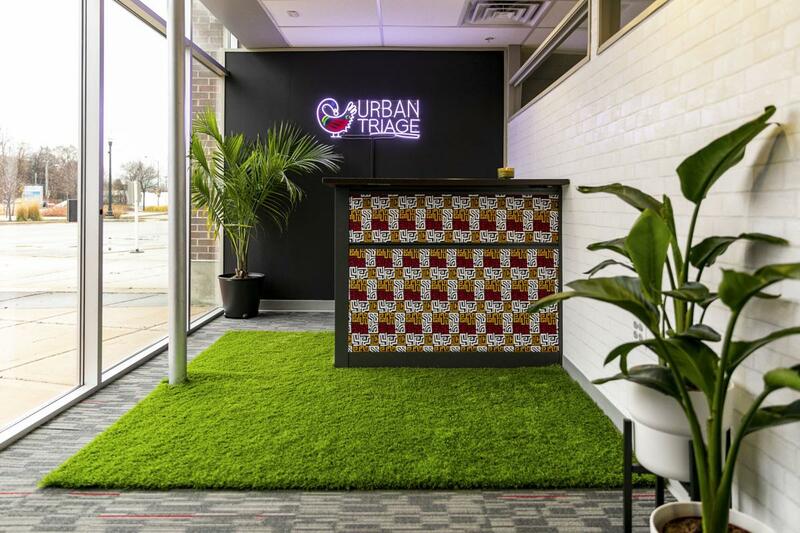
The Cap Times: "How Madison youth-centered programs work to avoid police interactions"
November 21, 2020
By Molly DeVore and Alyssa Huglen | Special to the Cap Times
View full article at the Cap Times
Editor's note: This story came about through a partnership with the Cap Times and a University of Wisconsin-Madison journalism class. Students analyzed the Cap Times People’s Agenda and chose to report on non-police solutions for community issues, one of the topics readers identified as a priority. Further information on DeVore and Huglen's reporting process is at the end of the story.
Shyra Adams spent her high school years presenting at Madison School Board meetings where she and other members of Freedom Inc.'s Youth Justice Squad spoke to rooms full of adults more than twice their age about their No Cops in School campaign.
Adams, now 20, said speaking at these meetings could be nerve-racking, especially when some attendees filmed the youth speakers and used those videos to find their personal information online. To address this issue, Freedom Inc. used a tactic seen this summer during many Black Lives Matter protests: human barricades.
“We would have a group of older folks that we would call a safety team,” she said. “The safety team would make a barrier around them (the youth speakers).”
After four years, their efforts were successful, and the Madison School Board voted unanimously in June to end its contract with the Madison Police Department.
But when police interactions with youth occur outside of the classroom, organizations like Freedom Inc. protect kids from police violence through a combination of approaches, ranging from cultural education to teaching youth how to organize protests. Freedom Inc. co-executive director M. Adams said this combination strategy is used to address the over-policing of Black youth. However, determining the most effective mix for Madison, specifically, can be difficult.
Freedom Inc. along with Urban Triage facilitate programs supporting and advocating for youth of color in the Madison community. From youth to parents to even dance teachers, both groups look to involve participants in solving community issues while distancing youth from direct police interaction. Meanwhile, some communities outside of Madison utilize a model that includes police in this youth support work. While these organizations navigate over-policing, they must also determine the best approach for their individual community and its unique dynamics.
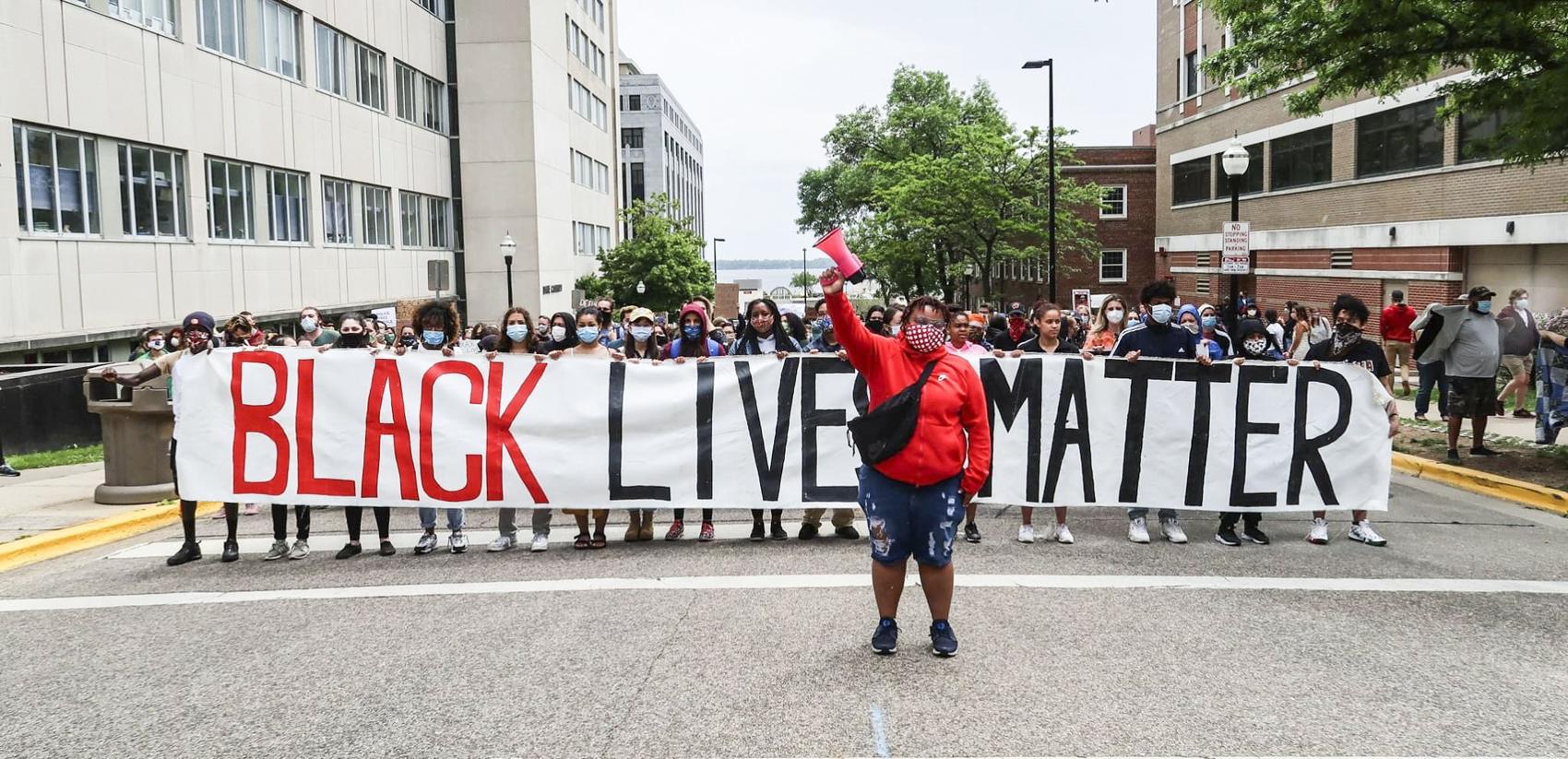
Youth Justice Coordinator of Freedom, Inc., Shyra Adams leads the Freedom Youth Squad in a march in Madison.
FREEDOM INC.
Racial disparities in policing of youth
Wisconsin is the second worst state in the nation for racial disparities in incarceration rates. Black youth make up almost 50% of the detention population in juvenile incarceration despite making up only 10% of the state’s youth population.
Urban Triage founder and CEO Brandi Grayson said these disproportionate rates are due to the over-policing of Black residents. Last spring, African Americans accounted for 27.7% of MPD’s traffic stops despite making up just 6.8% of the population.
Grayson said this continued police intervention is particularly damaging to youth.
“It stops us as a community from really digging into what is happening with this kid,” Grayson said. “If the kid is giving you attitude … if our response to that behavior is to call the police, then this teaches them that whatever needs they may have, they’re not deserving of having those needs met, and that validates the idea of Black inferiority.”
This reinforcement of inferiority can be dehumanizing for Black youth, Grayson said. When youth are treated as unworthy of being seen as human, they embody this mindset. From there, they start seeing themselves as the problem and behave accordingly, she added.
Damita Brown is the restorative justice director of the Dane County TimeBank, a local network of about 3,000 organizations and individuals who exchange services to fill unmet community needs such as peer mentoring or community gardening. Brown said to address this systemic problem, programs must recognize the cultural and contextual history of this treatment.
“Black people have been criminalized and dehumanized,” Brown said. “That is very much a product of our history that became necessary in order to justify enslavement … and so that dehumanization lasts to this day. We're viewed with such a dehumanized mindset that you can't expect policing to be a humanizing force.”
‘Youth leadership is a requirement’
Freedom Inc. and Urban Triage have gained recent attention for their roles in the Black Lives Matter protests over the summer, but this organizing is only a facet of the work they do. Both organizations work to reduce the need and the opportunity for police interaction with youth of color.
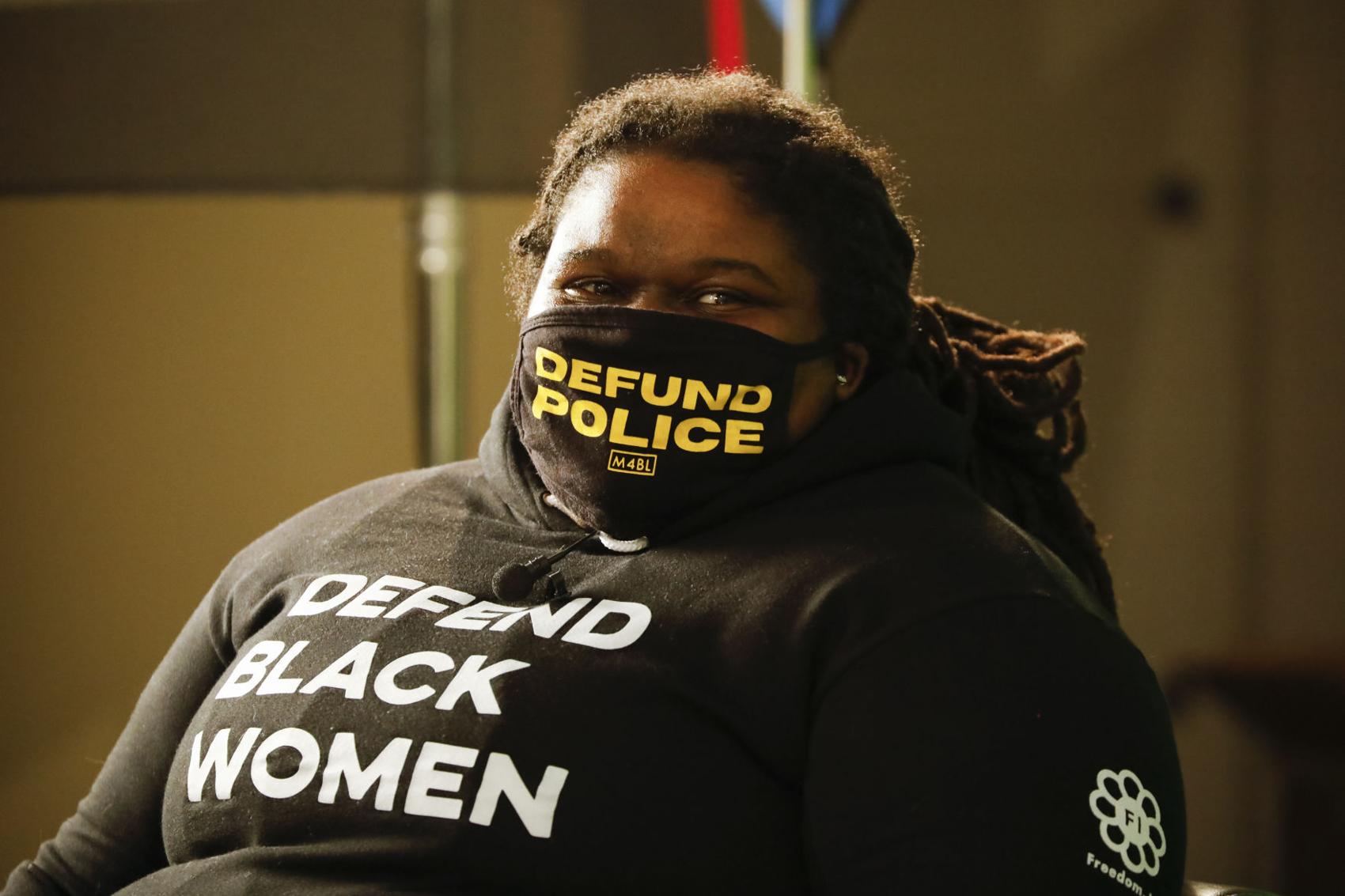
Co-Executive Director of Freedom, Inc., M Adams, was a panelist at the Cap Times Idea Fest session this fall, titled, “Protest Politics: What Makes Real Change Happen?”
RUTHIE HAUGE
M. Adams said all of Freedom Inc.’s protest work is intricately linked to its educational programs, with the youth who led marches to get police out of schools also teaching younger children how to read. These youth incorporated social justice into Freedom Inc.’s Books and Breakfast program, where participants have a meal while learning from books like “C is for Consent,” which teaches kids about bodily autonomy while promoting literacy.
Freedom Inc. offers programs for all ages, but places special emphasis on ending violence toward women, gender-nonconforming and transgender people and children within communities of color.
An important element of Freedom Inc.’s approach is training youth to lead campaigns and develop policy themselves, M. Adams said.
“To solve the oppression that our communities experience, that work must be led and driven by the people who are experiencing it the most, and what we know is that young people are vulnerable around racial violence,” M. Adams said. “To end those systems, youth leadership is a requirement.”
Urban Triage places a similar emphasis on supporting youth leadership, but achieves this by involving parents through the Supporting Healthy Black Families workgroup. This group trains cohorts of about 20 parents who attend meetings twice a week for 12 weeks and are paid a $50 weekly stipend. The workgroup, which began in 2019, has had four cohorts and a total of 82 graduates.
“The reason that we created this model around starting with adults is because often as adults, specifically Black parents who are surviving poverty, we’re oftentimes balancing working two jobs, taking care of our family, barely surviving and, because we exist in the context of white supremacy racism, we are also too often suffering from mental wellness challenges,” Grayson said.
These mental wellness challenges are the product of both contemporary struggles and generations of trauma experienced by the Black community, Grayson said, adding that this trauma is passed down to youth. By teaching parents the historical context of their own emotions, Urban Triage can show them how this affects the way they interact with their children.
Urban Triage measures its success through statistics, reporting a 90% graduation for their SHBF program. They also stay connected with participants, finding that 80% of graduates took on leadership roles in different areas of their lives, such as starting a business, running for elected office or becoming more involved with Urban Triage.
Similarly, Freedom Inc. has tracked its success through annual reports and mid-year newsletters. In 2016, they served 242 youth through both case management services and leadership training. The organization directly worked with over 400 people of color in Madison the following year. And its Community Power Building team, which involves Southeast Asian & Black populations in politics by canvassing and registering voters, helped get over 100 people to the polls in 2018.
Both organizations also measure the involvement of their members, with Freedom Inc. celebrating youth who take on leadership roles within the organization. Some participating youth said their time at Freedom Inc. has been so influential, they now consider it their family.
“This is family, it’s not just work, it’s not just getting paid, it’s actually a lot of community-building and skills,” said Shyra Adams.
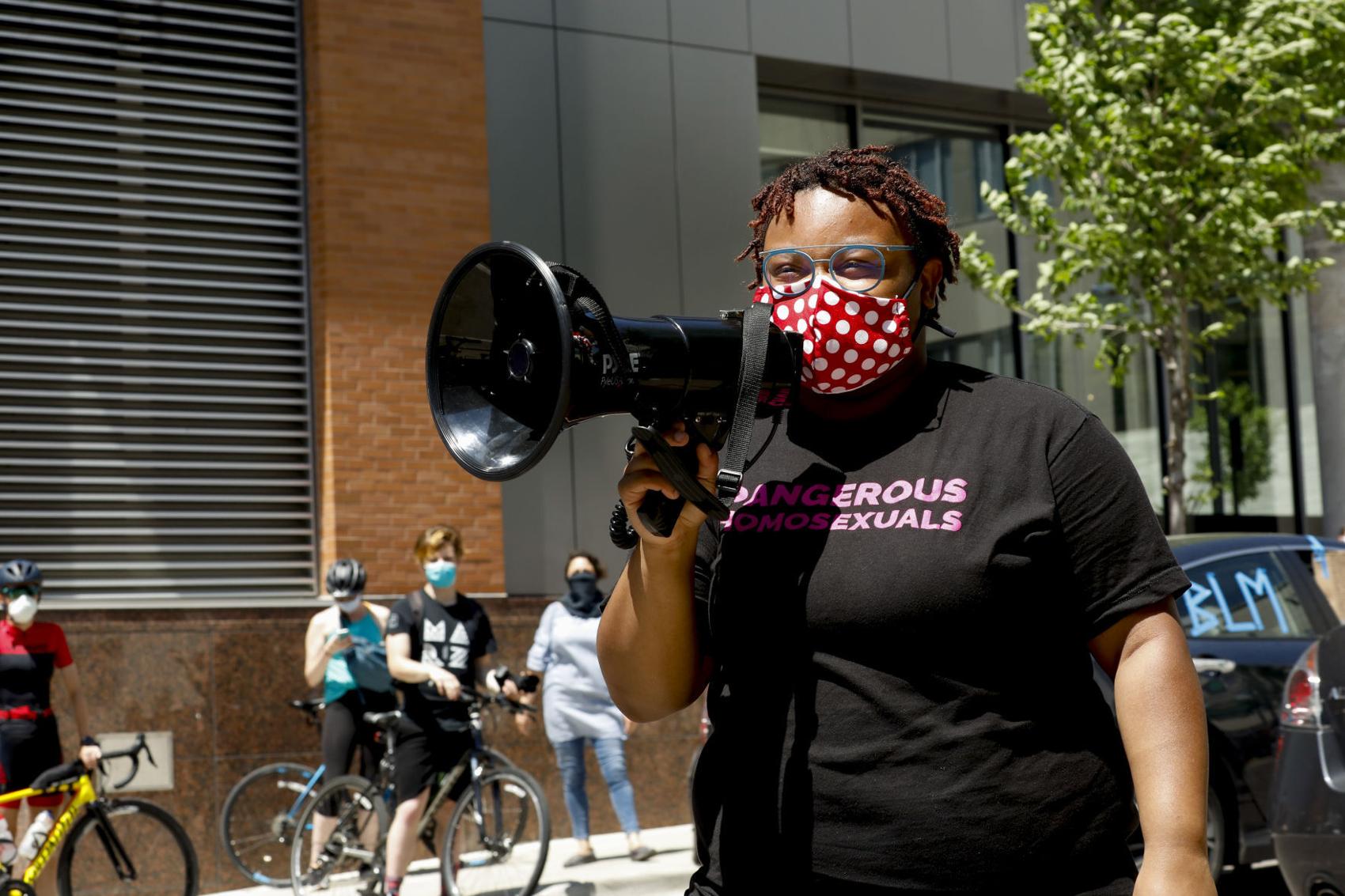
Shyra Adams, Youth Justice Coordinator for Freedom, Inc., directs cyclists and drivers to follow the line of cars for a peaceful caravan protest, outside of the Dane County Jail in Madison, on Tuesday, June 2, 2020.
RUTHIE HAUGE
Urban Triage measures its success by collecting testimonials from participants. One participant in the third cohort said the training helped them understand how their trauma has affected their way of being, helping them change their behaviors.
Grayson said seeing these types of “aha” moments where parents are able to change their practices and improve communication with their children is how she knows the program is working. She said through this work of educating parents, youth build their confidence, helping them feel heard and validated.
A role for police in this work?
Beyond the Madison area, other community-based programs are also focusing their work around youth. This can be seen through the decades-long work of Team Kids.
Founded in 2001, Team Kids is a California nonprofit organization. Its primary work is done through the Team Kids Challenge, a five-week program where elementary school children work alongside local law enforcement, firefighters and teachers to learn life values and address community issues.
Ten years ago, Team Kids founder and CEO Julie Hudash proposed the idea to analyze the program’s effect on the relationship between youth and law enforcement.
“While it was never the impetus of the program, it became clear to me that we were also addressing a really important issue, and that was, ‘How do we build these personal, human, trusting relationships between law enforcement and kids?’” Hudash said.
To measure the program’s success, Team Kids looks at data collected through surveys participants complete before and after the program. These surveys ask youth about their relationships with police.
Adam Fine, assistant professor in the School of Criminology and Criminal Justice at Arizona State University, recently studied Team Kids Challenge’s effect on four Compton, California, elementary schools predominantly composed of youth of color. Fine’s analysis found that kids’ perception of law enforcement significantly improved after the program.
Hudash said she is optimistic Team Kids Challenge has the potential to succeed in all communities.
“We want to be a solution. We want to be one of those strategies that’s empirically validated that can address these issues and bring a community together,” Hudash said.
Though Team Kids Challenge has found success in improving perceptions, Fine said many communities may not feel comfortable involving law enforcement in youth programs.
“These types of programs are useful in communities that are ready to begin either building or rebuilding relationships with law enforcement,” Fine said. “But it's fully understandable why many communities would not want programs like these because they're just not ready yet … because the problems within policing are so deeply ingrained, and the community doesn't feel safe bringing together law enforcement and children.”
Madison might be a community where distrust still runs deep. Selena, a Madison high school student and youth staff member for Freedom Inc., said in her experience, police interactions have largely been harmful.
“Cops can be very traumatizing to (youth) because throughout school and in the hallways, they are constantly harassing students,” Selena said.
Support through funding
Grayson said these damaging police interactions compound the “generations upon generations of trauma” experienced by the Black community.
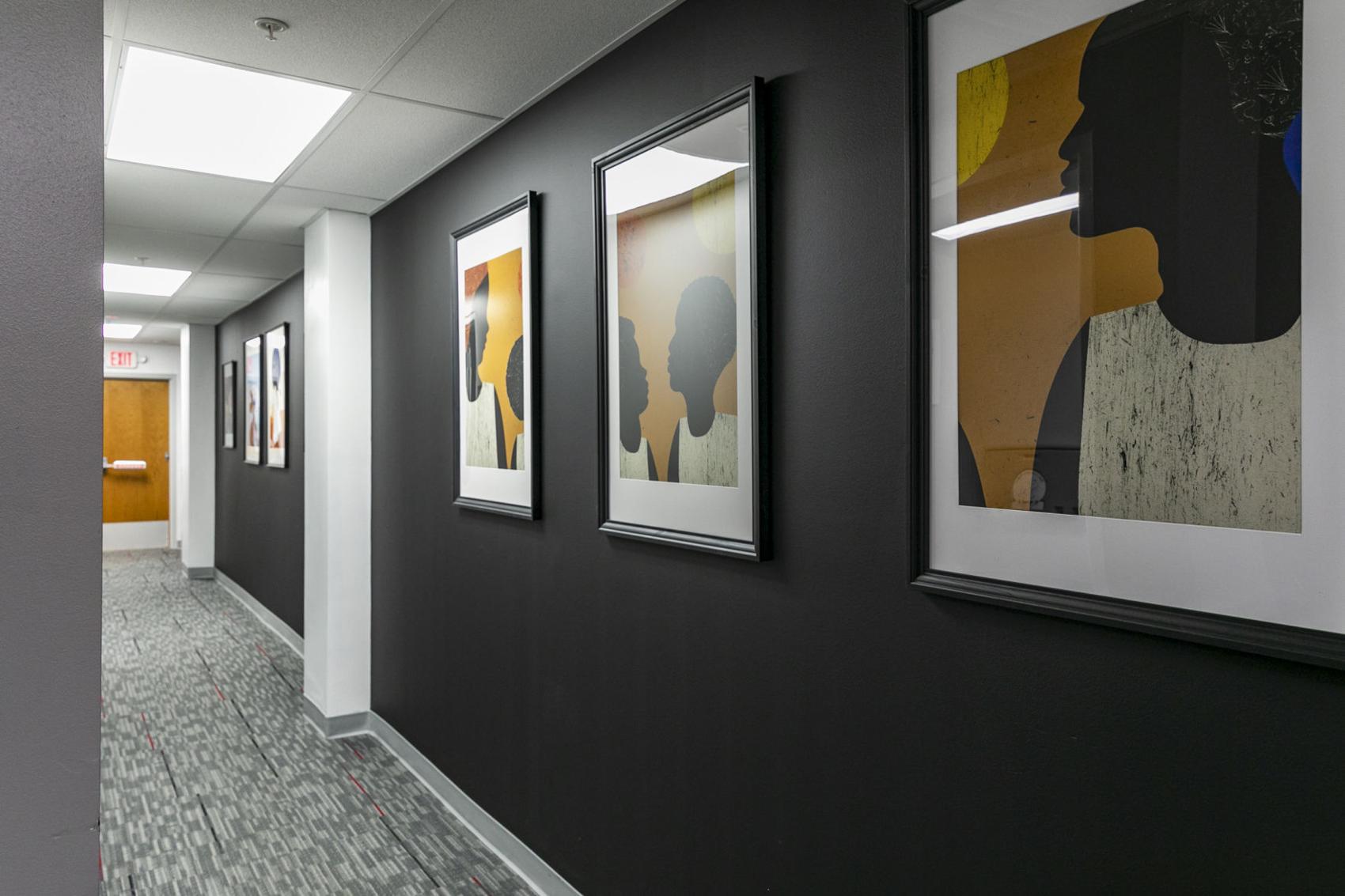 The new space for Urban Triage in Madison, pictured on Tuesday, Nov. 10, 2020.
The new space for Urban Triage in Madison, pictured on Tuesday, Nov. 10, 2020.HEDI RUDD
To effectively address this trauma, M. Adams emphasized the importance of culturally relevant programs. M. Adams said because people of color have faced, and continue to face, forced assimilation and the intentional erasure of their culture, having a space to practice traditions through programs like the Cambodian dance groups and Hmong language classes Freedom Inc. offers is a part of their political education.
“Part of the violence that we experience is cultural violence,” M. Adams said. “It is a direct assault on our arts, it is a direct assault on our language, it is a direct assault on our food and our ways of being with one another, and part of our resistance work is keeping those things.”
Reallocating funds away from the police to community organizations providing this cultural context is a way for the Madison community to work toward better supporting Black youth and youth of color, Dane County TimeBank’s Brown said.
“I don't believe that what we need right now is reform. I believe what we need right now is to redirect funding from policing into what our communities really need,” Brown said. “We need to take that money out of the police budgets and put it into the budgets of organizations, individuals and people with the expertise to provide the support our communities deserve.”
Freedom Inc. has put a number to this reallocation of funds: a 19% cut to MPD’s budget. M. Adams said this would have helped the City Council avoid the proposed 5% cut across all city agencies, a consequence of the COVID-19 pandemic.
M. Adams said this reallocation is especially important as increased police funding does not reduce crime. A recent Washington Post analysis came to this conclusion as did a study done by Justice Policy Institute in 2012.
Both Urban Triage and Freedom Inc. said these funds would be better spent supporting their work. The organizations are currently expanding their programs. Urban Triage opened a new space on Nov. 15 and Freedom Inc. is working to provide more resources to youth in light of COVID-19, holding events like their recent “Black to School Giveaway,” where they handed out school supplies.
Success moving forward
For Grayson, the success of these programs needs to expand outside the homes of those involved, making “ripple effects” that create positive change in the Madison area and beyond.
Brown echoed this sentiment, saying to ensure real progress is made, youth programs need to feed the community they exist in, strengthening both youth and those around them.
“What we really have to do if we want success when it comes to community safety is to look at the importance of making our communities strong, creating a strong sense of belonging, and creating a strong sense of connection between people and respect for each other's value as human beings,” Brown said.